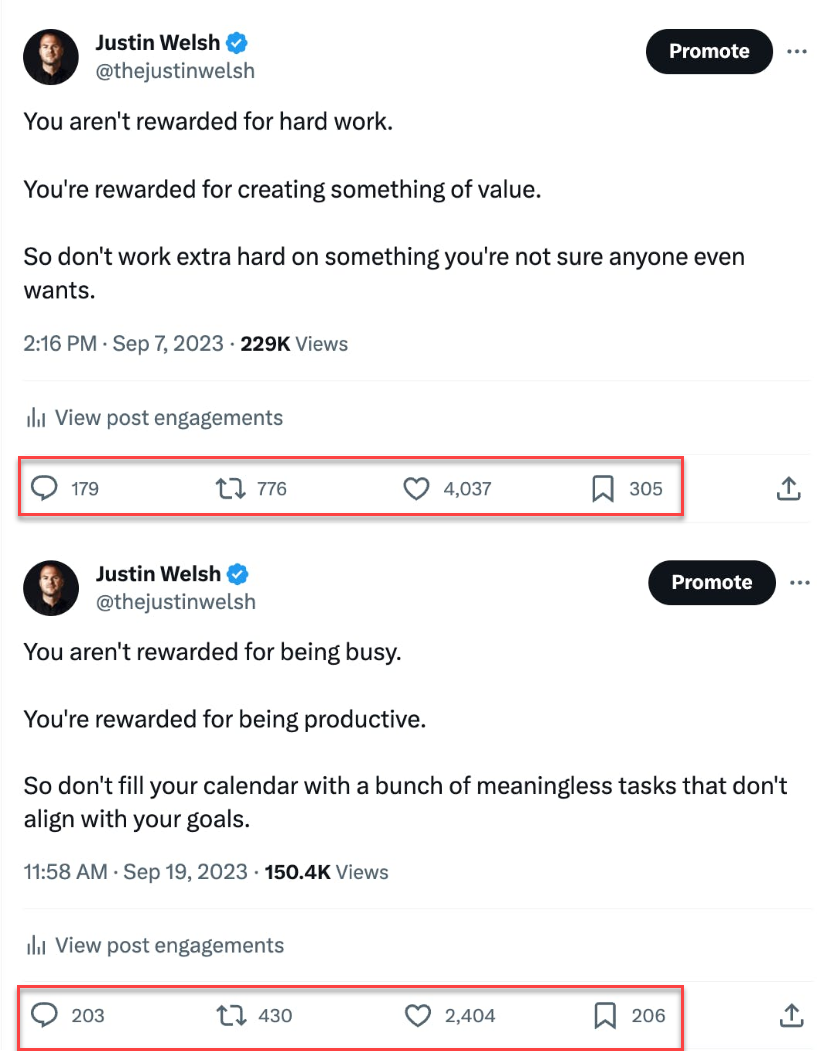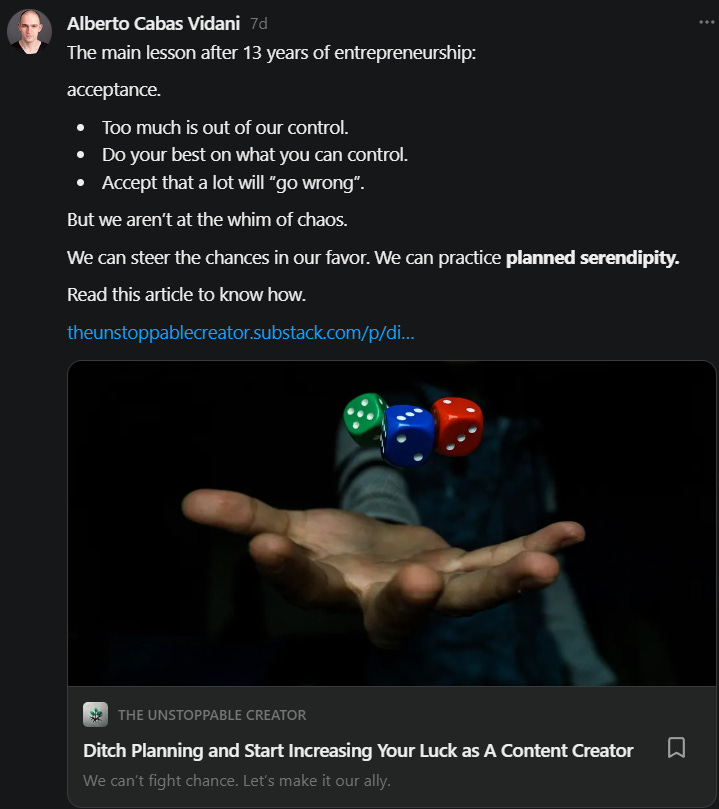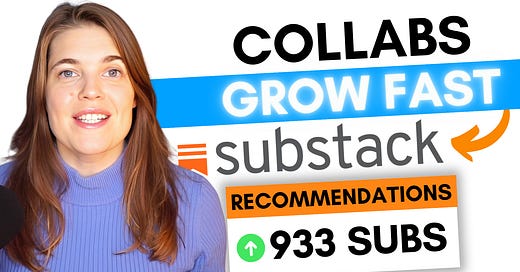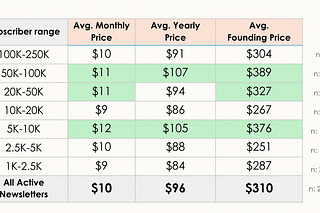
How to Repurpose Your Writing on Substack in 3 Simple Steps
Minimize burnout, maximize opportunities in 2024 and joyfully grow your newsletter in a few hours per week.
Every strategy is short-lived in online publishing. Platforms change all the time. Sometimes they completely stop working. Often, you need to be on more than one to reach a large and engaged audience.
But where do you find the time to be active on all those platforms?
The best answer is repurposing. Put simply, it means recycling your content on multiple channels, with or without changes. Most successful creators do it.
I’ve known this for years. I bought courses about repurposing. But I never implemented it. It’s harder than you think.
I finally pulled the trigger in May 2024. I gained 378 engaged subscribers in three months, starting from scratch on a new platform (Substack).
It cost me just a few hours each week.
In this article, I’ll help you:
understand why repurposing is useful,
how to overcome the obstacles that prevent you from using it,
lead you through the three steps of repurposing that’ll help you produce more content without sacrificing quality.
I will also show you what I’m doing on Substack as a case study.
What’s repurposing?
Let’s spend 30 seconds getting in sync: Repurposing means reusing content by reposting it on different channels, as is or with some changes.
Some examples of repurposing are:
publishing the same article on multiple channels,
chopping a long video into multiple short videos,
summarizing a long article into a short social media post.
We'll explore different approaches later so you can develop your custom strategy.
Why is repurposing so difficult?
The advantages are clear—you create content once and benefit from it for months or years across various platforms. Masters of repurposing like Justin Welsh single-handedly dominate multiple platforms. Then, they leverage their 6-figure or 7-figure audiences to make 6-figure or 7-figure revenues.
Here’s an example from Justin’s blog. He published two almost identical posts within two weeks. Both received extremely high engagement:
It’s a no-brainer. So why did I resist for years?
My family values hard work. They view shortcuts negatively, even when they achieve the same results as the hard route. Many share this mentality, especially in the West, but it’s wrong. Wasting your life on unnecessary hard work is a deadly sin.
Repurposing feels less creative. It feels like cheating. But that's just fear of judgment. Let your audience tell you if you're overdoing it. No one’s handing out awards for “the most ethical writer of the year”.
It’s one more skill to learn. We're always running out of time. And it’s not even a skill that improves our content. But thoughts like this are self-sabotage. Without self-promotion, we’re just journaling.
Here's how to make repurposing easier in three steps.
Step 1: Copy-Pasting
Let’s start simply: publish the exact same content on multiple platforms.
For example, put the same article on Medium and Substack, the same short video on Instagram and TikTok, the same short post on X and LinkedIn.
This is the quickest and easiest step, but also the most boring and less flexible. The problem is that the audience on each platform has different preferences. And the algorithms differ, too.
If you want to reuse the same content as is, you need to design it in advance keeping the requirements of both platforms in mind.
For example, I published the article below on both Medium and Substack:
I was able to use the same headline and image. Notice the striking difference in the numbers. To get more views on Medium, I should have catered to the Boost nominators (human curators). But that curation mechanism is too random. Plus, I know they have a prejudice against this topic, so this time I saved time and effort.
Now you’re probably wondering: won’t my followers be annoyed by the duplicated content? It may happen, but for less than 1% of the time:
algorithms don’t show everything to everyone,
your followers don’t consume everything you put out, even when they see it (bummer, I know),
they usually aren’t on multiple platforms, but if they do, they may forgive the duplicates if each platform also offers original content.
Step 2: Re-Adapt
This is the most frequent approach. It involves modifying content to optimize it for each platform.
It’s more adaptable than the previous step, but it allows you to potentially appear on all platforms. It requires more work, though.
The strategy with the highest potential is this:
write a long article and send it to your newsletter,
publish it on one or more long-form platforms,
publish it on your blog (if you have one),
record a video reading the article,
publish the audio from the video as a podcast episode,
extract multiple short posts from the article, tailored to the different social networks you’re on (quotes, lists, main ideas),
extract multiple short videos from the video version,
create images and/or carousels with quotes, data, or other snippets from the writtern or the video version.
If this sounds like a lot of work, you’re right, it is. And it don’t just stop at readapting the content. You need to learn the every platform’s best practices. You need to learn additional tools.
Worst of all, this way, content creation feels like a conveyor belt. But you can also see it as a creativity exercise. Summarizing, finding small nuggets out of long content, changing titles and hooks is not automatic.
So, as always, it’s a matter of finding your own balance. To stay sane, choose your platforms based this criteria:
how easy it is for you to create content on them,
how much you like the conversation, there,
the potential for organic reach.
Then, implement just a few steps from the list above, according to the resources available to you.
Step 3: Recycle Ideas
The third phase is the most stimulating. At this point, you don’t recycle content. You recycle ideas. What does this mean?
For example, you develop a new method for knowledge management. Then, you create multiple pieces of content that:
explain the method in depth,
show its application to different use cases,
list the tools you can use to implement it.
You still have to create that content from scratch, but only draw from what you already know. You don’t need additional research.
You can also flip the process and use content to refine your ideas. Share your raw thoughts in short posts, gather feedback, and evolve them. As they become more refined, they can inspire longer, deeper content.
For example, my first successful note on Substack was this one:
I expanded it into the following article:
Not my top-performing article. But it still got 3 new subscribers. And of course I republished it on Medium.
An Example in the Wild
Here's what I've been doing on Substack these past two months:
On Wednesdays, I published an old Medium article or newsletter issue I sent to my existing email list.
On Fridays, I usually published something original.
On Notes (Substack social network), I sometimes posted summaries of articles I had already published or tested content ideas.
Some posts on Notes that received strong engagement became longer articles.
I reply daily to other people’s posts and articles. When I write a reply that’s particularly insightful, I republish it to my profile, after some polishing.
Here’s an example of a “summary post” linking to an article:
It’s a Habit and a Mindset
The more I repurpose, the more I see opportunities to squeeze out more value from my content. This way, content creation feels less like a hamster wheel. I get more results from the same amount of work.
And please don’t see it as a greedy capitalist practice. No one is harmed or impoverished by this. The lessons in my content are still valuable. This way I reach more people and avoid (or limit the risk of) burning out.
It’s becoming so ingrained that I also see how I can repurpose moments from my life, not just content. It’s an insurance against writer’s block.
I hope this article inspired you to try repurposing
To start:
choose two platforms you like,
choose a method of repurposing that suits you,
start small,
constantly reevaluate and adapt your strategy.
Read these articles to help you choose the best platform:
Hungry for more?
Similar to Alberto also writing rockstar
, who quit YouTube, Medium and LinkedIn, now repurposes his best performing content on Substack to not feel burnt out.In this week’s podcast episode, you’ll learn more.
Let me watch it!
⭐⭐Calling all Unstoppable, Future Repurposing Superstars⭐⭐
Do you feel inspired by Alberto’s WOW-worthy repurposing strategy and content flywheel?
Alberto is a dear and super active member of my Online Writing School with the hands-on, tangible and confidence-building courses Substack School and Medium School.
The NEW Medium School course alone has 111 lessons (!) and about 25 hours of tutorials, interviews, replays, and bonuses, the writing community with 220+ members, LIVE sessions, and many surprises.
My courses gets updated all the time based on the questions I receive from my community.
Members also get access to my Social Media/Medium/Substack content flywheel tutorial and live webinars with all writers I interview and exclusive sessions with me, e.g. about becoming a Substack bestseller, using Notes or
Good news: It’s a perk for members (subscribers) of my paid community.
And the best part?
It’s only $9 per month or $90 for 365 days support and community.
No, I’m not kidding.
We’re more than 220 members strong and happy to grow together.
Come join us and have some fun!
❤️🔥Your feedback is just a spark but it’s enough to keep me, a part-time writer, going.❤️🔥
I hope this eye-opening interview inspires you.
Dare to be YOU!
P.S. Liked it? Please share, like, and let me know what you think about my new show 💗 Your feedback is important and can spark many ideas. Thanks sooooo much!
P.S.S.
is truly unstoppable. Make sure to subscribe to his newsletter The Unstoppable Creator. 🙏🏻





























At first I though repurposing would ONLY work when using it on multiple platforms OR when you used a very old article again at some time. But this post was eye-opening, thanks so much for these insights into how we can tweek the "repurposing" in an actual meaningful and valuable way - even on the same platform and even if we don't have a long article archive!
I am new to Substack and have plans to repurpose content from Medium, in various formats. It is encouraging and helpful to see your list of repurposing options. Thank you!